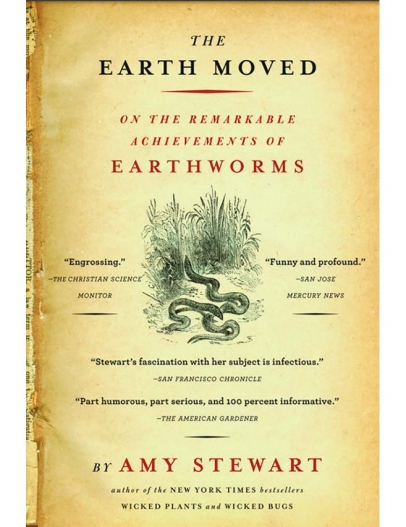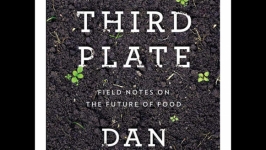If you think worms are gross, or simply uninteresting, prepare to be blown away.
THE EARTH MOVED: ON THE REMARKABLE ACHIEVEMENTS OF EARTHWORMS
By Amy Stewart
If you think worms are gross, or simply uninteresting, prepare to be blown away. In her signature quirky and engaging style, Amy Stewart, the author of The Drunken Botanist and Wicked Plants, introduces us to the humble yet extraordinary earthworm. Stewart refers to her beloved subject as “the intestines of the soil,” “nature’s plough” and “the custodians of the planet.”
With Charles Darwin as her mentor and the worms in her garden as her muse, she dives into their biology and abilities with infectious excitement.
Darwin’s last published book was about earthworms and Stewart describes the elderly scientist patiently studying his subject just outside his house at night, setting up detailed experiments with hundreds of little paper triangles to see how the worms pull objects into their burrows. Darwin estimated as many as 50,000 earthworms could be living in an acre of soil. Earthworm scientists now know that the actual number is much higher. In the fertile soil of the Nile Valley, scientists estimate over a million earthworms live in each acre, depositing over 1,000 tons of nutrient-rich castings (worm poop). The gardeners among you understand the mind-boggling value of this free fertility. Earthworms pass the top few inches of soil through their guts every year, aerating and fertilizing it naturally.
Stewart points out that we know more about what’s happening in outer space than we do about the ground just under our feet. Not only have worms and the vast number of soil organisms that cohabitate with them been undervalued as subjects, they are also extremely difficult to study because we have to destroy the soil they’ve built to attempt it. Still, despite the odds, a growing number of worm aficionados are discovering remarkable things about them. Stewart proves to be an excellent guide through the wide world of weird worm people, combining the curiosity of a scientist with the passion of a gardener. She takes us on a journey from her home worm composting bin to a huge municipal wastewater treatment plant employing millions of worms to clean up a city’s sewage. Even Idaho’s Giant Palouse earthworm gets a nod. The reader discovers that worms can help fight plant diseases, clean up toxic waste sites and even become invasive pests in certain ecosystems.
It is rare to find a natural history book that succeeds in delighting readers as much as educating them. Stewart’s engaging style has us falling in love with her blind, deaf, lung-less, spineless slime-tube of a subject, which Darwin calls “a worker of vast geological changes, a planer down of mountainsides … a friend of man.” Never will you look at the earth under your feet the same way again.






